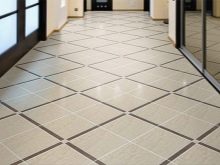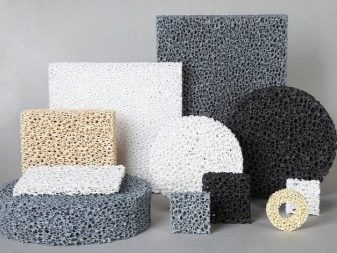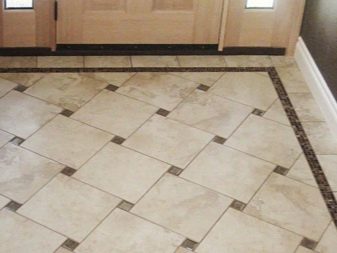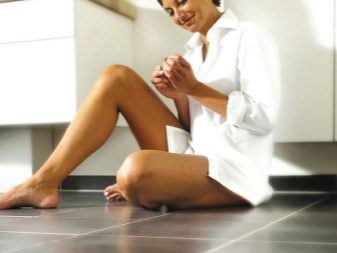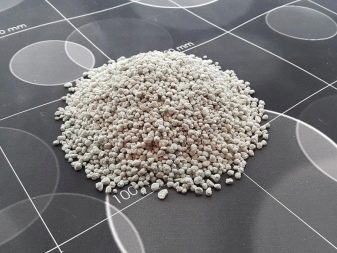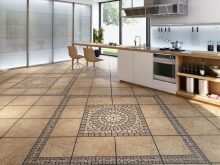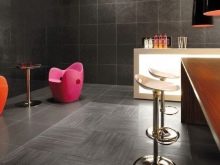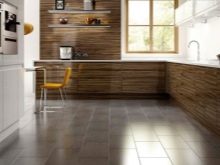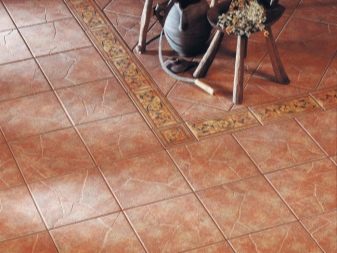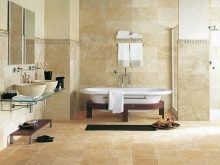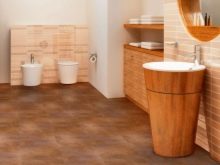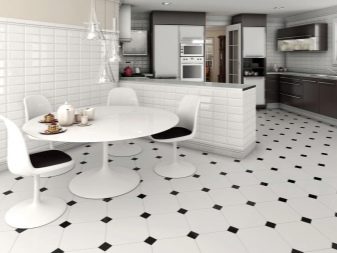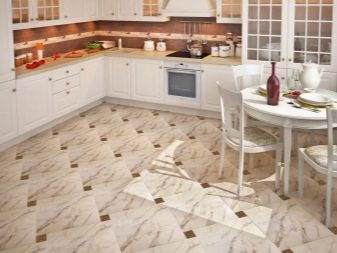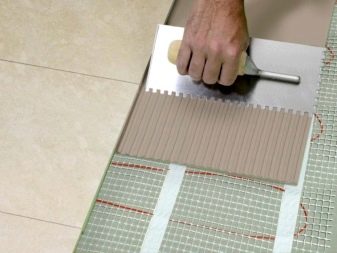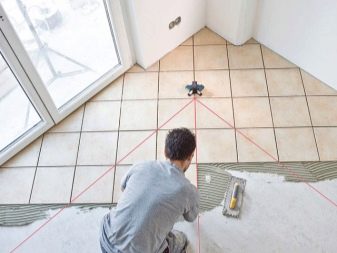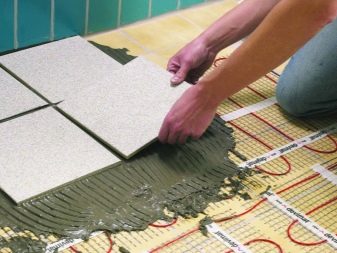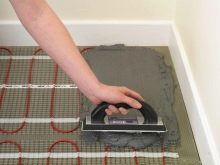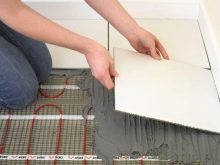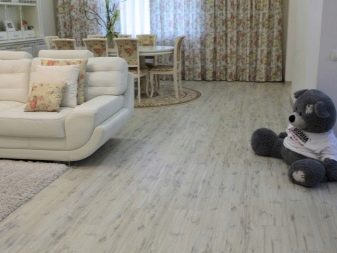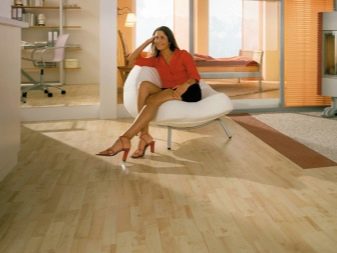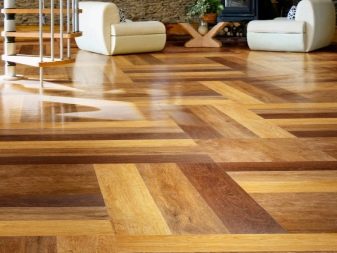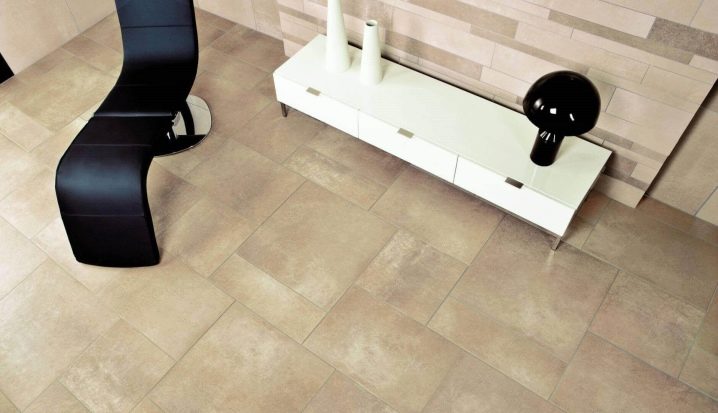Warm floor tiles: selection criteria
To solve the problem of cold coating, and reduce heat loss, lately, warm floor tiles have been increasingly used. Therefore, the selection criteria for this material is extremely important. And since such products appeared on the market, it is necessary to be able to distinguish them.
Technology features
Foam ceramics, on the basis of which the tile is made, an innovative product, safe to use, and, moreover, inexpensive. Due to the fact that the substances included in it do not react with cement, concrete and plaster, it can be used as a filler for ceramic products, artificial stone. Its structure consists of cells and therefore retains heat well, and the performance of the coating is high.
Ceramic and slag wastes, slate, river silt, waste rock are used as raw materials. As a result of firing, closed pores are formed, evenly spaced throughout the structure of the material.This is due to the insulating properties of the product.
Granular ceramic foam - an analogue of expanded clay and similar backfill materials. Natural origin eliminates the release of toxic substances into the environment. Raw materials - minerals determine the main properties.
Against the background of other coatings, it is an affordable option for the floor, consisting of mineral and diamite elements (deep-water sludge). Its cost mainly depends on the complexity of production.
Benefits
The advantages of warm tiles are indisputable, since the technology provides for the creation of a robust mantle that protects the surface from significant mechanical loads.
Main qualities:
- high parameters of compressive strength, tension and pressure;
- the repulsion of moisture;
- good sound absorbing properties;
- safety due to natural ingredients;
- resistance to pollution;
- fire resistance and anti-static;
- dielectric strength;
- wear resistance in any aggressive environment, when exposed to ultraviolet rays, high and low temperatures, household chemicals.
Ceramic tile is available in different colors, has different formats,what gives the chance to choose the most suitable to all requirements of a product for any room and style.
This the covering can be used independently without heating and for the device of a heat-insulated floor in combination with heating systems water and electric type. Due to thermal conductivity, heating costs can be minimized favorably.
How to choose?
You need to select the material taking into account other elements of the decor, especially the furniture, wall cladding, in the bathroom - the specifics of sanitary devices. According to these criteria, it is easy to choose the size, color, pattern of the floor covering.
It is necessary to coordinate this decision with the lighting of the room, since it is of no small importance and can make it visually more spacious and bright with small area parameters.
Particular attention is paid to such an indicator as porosity. The lower it is, the more solid the strength, performance, including cold resistance and moisture resistance. Thermal insulation and absorption of extraneous sounds also depend on this criterion.
Other important points:
- If the permeability in the room is high enough, you must choose a coating with a high class of abrasion, safety margin. Therefore, you need a product that has a low porosity.
- The friction parameter is also relevant. If the tile is glossy and, accordingly, unstable, it is necessary to make its surface rougher. To do this, you will need to put on it a special composition that makes the texture more prominent.
Any material for flooring is better to purchase from trusted manufacturers. For such products there is a certificate and other documentation confirming the quality.
Alternatives
Warming of floors can be made with the help of other facing products. Ordinary tiles made of ceramics or porcelain tiles are quite suitable for this purpose, because they have all the necessary properties for this - durability, reliability, durability.
Most products of this type are suitable for installation on heating systems. With the exception of rectified ceramic granite - it expands when heated, and the laying is usually carried out closely, virtually without seams.
Since the "plant" material will have to glue, this issue will also need to pay attention - only a special composition is used, which is able to maintain a normal surface and protect it from cracking. Such products take place in the construction market, and the packaging contains all the necessary information about the purpose and application.
There is a tile that is used specifically for water floor heating. It has a well-defined roughness, the level of thermal insulation required in the presence of different temperature regimes in the building.
Laying it should be done carefully, avoiding the formation of bubbles and voids that can adversely affect the technical characteristics.
Additional insulation
You can walk barefoot on the warm floor with the laid tiles and not freeze, so it always makes sense to conduct a heating system for ceramics.
For this fit electric and water floor:
- For the electrical version use infrared film or cable. The first method is more economical, moreover, such a system is not afraid of corrosion, can be repaired by itself, and its work is silent.
- The cable should be placed on a glue base and laid directly on the screed, but this method is difficult if repair is necessary, it also does not allow to save energy costs.
With particular care should choose glue, it is better to immediately acquire a two-component composition based on epoxy or with the addition of plasticizers and cement.
The editing algorithm is as follows:
- cleaning the base of dust, dirt;
- alignment;
- installation of a suitable heating system;
- Laying ceramics on top of the glue 10 minutes after application.
It should take at least 24 hours, after which you can perform grouting. Operation of the coating is provided after 30 days. If there is even a little experience of such work, you can cope with it without the help of specialists.
How to lay the tile on the warm floor, see the next video.
Feasibility of products from vinyl and PVC
Components made of modular polyvinyl chloride have good wear resistance and moisture resistance, they can be used as a material for rooms with low permeability, for example, for technical and commercial premises.
Of course, their service life is much less, but there are some advantages:
- PVC products have a large assortment in their colors and texture;
- they are warmer than laminate and absorb noise well;
- this tile is resistant and has a higher strength than linoleum.
For your information, small PVC tile formats should be purchased for small bases, and it can be laid on concrete, laminate, plywood and linoleum.
Regarding vinyl products, they are suitable for both public and residential buildings, they can be combined with different heating systems. Different samples can withstand high temperatures up to 32 degrees Celsius, and this must be considered when choosing.
A plus is an aesthetic appearance, resistance to physical and chemical influences. Vinyl tiles, if desired, can be laid personally, without using the services of professional craftsmen.
Tiled warm floor in its own way is universal - on hot days it is cool to the touch, and in cold weather it maintains comfortable warmth. This is a good option for a private house and apartment, especially since you can select suitable components in accordance with your own requirements and wishes.


